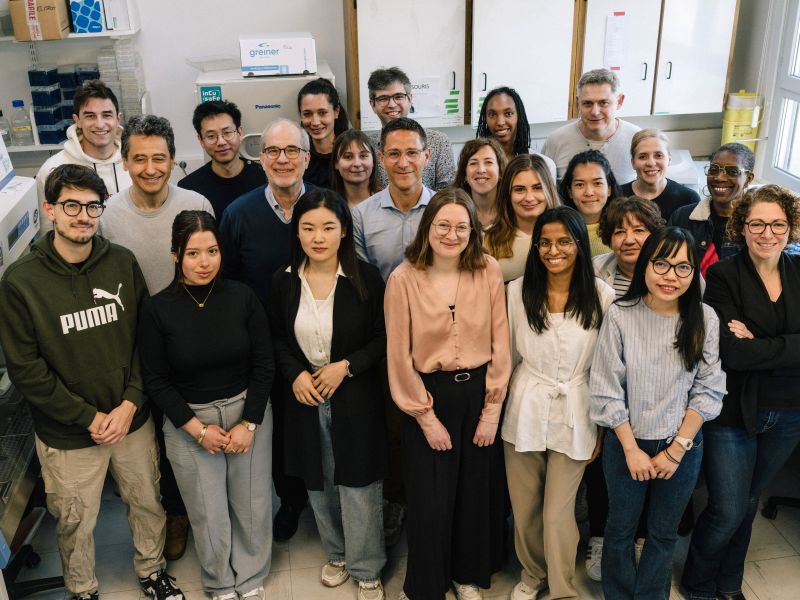
Team 2 Homeostatic and Pathological Chemokine-Regulated Interplays
between Lymphocytes and their Microenvironment
Institute of Research Saint Louis
Inserm U1342


Partnering
Our research center is proud to be associated with research centers,
companies and laboratories such as




















Research job offers
There is no available position at the moment. Do not hesitate to reach us for spontaneous application. We will be pleased to assess your file.

Main description
Our team studies the mechanisms driving the localization, fate, and function of lymphoid cells at steady-state and in the course of immune/hematological disorders namely WHIM Syndrome, Waldenström Macroglobulinemia, Sezary syndrome and Myelodysplastic Syndrome (MDS), through both fundamental and translational research projects. Since 2019, we have developed models to investigate the bone marrow (BM) and skin ecosystem in mouse and human to unravel essential processes in the most efficient ways. One of the major scientific strengths of our team is the great synergy between projects based on complementary approaches and expertise.
A wide range of techniques have been set-up in the lab from in vitro assays, organoids, highly multiplexed immunophenotyping, microscopy and transcriptomic analyses to animal models, thus facilitating the study of the reciprocal dialogue between our lymphoid cells of interest and their environment. Our team has acquired international visibility on key aspects of the molecular and cellular biology of interactions between lymphoid cells and stromal cells within the BM, focusing on the chemokine signaling system. Our ground-breaking discoveries include novel mechanistic insights into how CXCR4 signaling regulates the lymphoid potential of hematopoietic stem and progenitor cells (Freitas et al. JEM 2017; Rondeau et al. Submitted), the osteogenic fate of BM skeletal stromal cells (Anginot et al. Nat commun 2023) as well as the trafficking and differentiation of plasma cells (Alouche et al. Blood 2021). We also unraveled that regulation of the endoplasmic reticulum shape and function by Sec22b is critical for plasma cell survival (Bonaud et al. PNAS 2023). Finally, major publications focused on the impact of the MDS associated to mutations in TET2 on T cells (Zhao et al. Leukemia 2021) and NK cells (Boy et al. Nat Commun 2023).
Lastest publications

Sci Signal - CXCR4 signaling determines the fate of hematopoietic multipotent progenitors by stimulating mTOR activity and mitochondrial metabolism
CXCR4 signaling determines the fate of hematopoietic multipotent progenitors by stimulating mTOR activity and mitochondrial metabolism.
Rondeau V, Kalogeraki M, Roland L, Nader ZA, Gourhand V, Bonaud A, Lemos J, Khamyath M, Moulin C, Schell B, Delord M, Bidaut G, Lecourt S, Freitas C, Anginot A, Mazure N, McDermott DH, Parietti V, Setterblad N, Dulphy N, Bachelerie F, Aurrand-Lions M, Stockholm D, Lobry C, Murphy PM, Espéli M, Mancini SJC, Balabanian K.
Sci Signal. 2024 Oct 29;17(860):eadl5100. doi: 10.1126/scisignal.adl5100. Epub 2024 Oct 29.
PMID: 39471249

PNAS -- Sec22b is a critical and nonredundant regulator of plasma cell maintenance
PNAS -- Sec22b is a critical and nonredundant regulator of plasma cell maintenance

Nature Com -- WHIM Syndrome-linked CXCR4 mutations drive osteoporosis
Nature Com -- WHIM Syndrome-linked CXCR4 mutations drive osteoporosis




